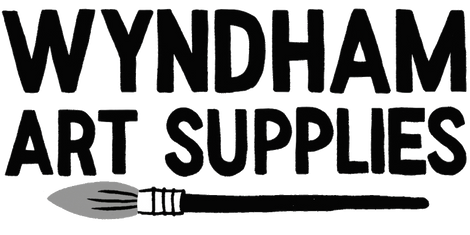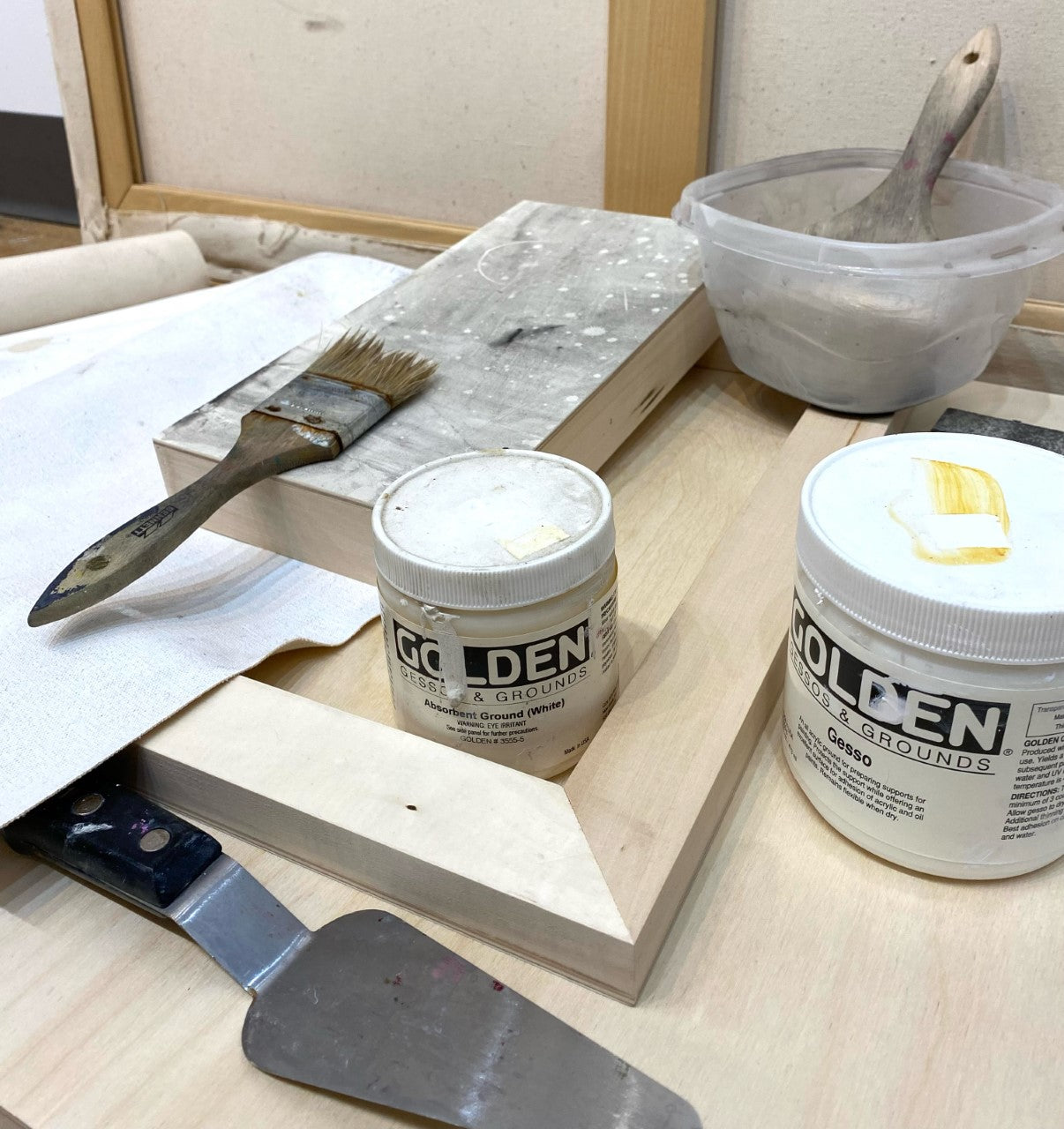Clear Gesso. Gesso (from the Italian for gypsum) is the go-to all-around primer for most painters. It is usually white, sometimes black or grey and other colours.
Clear Gesso is great if you want to be able to see your support (raw canvas, paper, woodgrain or underpainting for example). It tints up easily with acrylic paint for a coloured ground of any intensity or clarity. It also has a bit of grit or tooth which provides a great surface for dry/drawing mediums. Considered to be semi-absorbent, like most gessoes.
Fine Pumice Gel is a mid-density, slightly greyish medium that can be used on it's own or mixed with colour for a nice receptive ground for dry media like pencil, charcoal, or pastel. The porous pumice mineral used in the gel takes on colour and other mediums well and becomes integral to the dried acrylic film. This means that unlike sand or other hard grit additives which are simply embedded, the pumice becomes one with the paint.
Absorbent Ground
Offers a water-receptive surface similar to watercolour paper, that accepts watercolours, gouache, ink and fluid washes beautifully. Equally receptive to dry media, mixed media and oil paint (provided prior surface preparation). Try it for watercolour effects, staining, or any time you want to work really wet and don't want your material to just run off your surface. Because colour soaks in readily, it can be difficult lifting or removing colour once it is down.
Pastel Grounds
Diane Townsend has a dry pastel ground that is great for travel or long term storage.The bar of fine-grit solid is applied to paper and rubbed in by hand to give a receptive surface for soft pastels. We suggest wearing rubber gloves when applying as it can wear your fingerprints smooth!
Golden Acrylic Ground for Pastel leaves an off-white translucent textured finish. It can be used on it's own or tinted with acrylic paint. It provides a soft tooth similar to Fine Pumice.
Rigid supports such as masonite or birch panels are great for fragile or non-flexible media and also offer a firm surface for techniques involving scraping, scratching, burnishing, gluing, printmaking/pressure etc., that might be difficult on a flexible support.
Mounting paper to panel. Many of these products give a surface that is similar to watercolour, pastel, printmaking, washi and other papers. Another approach is to mount actual paper to a panel (before or after adding any information to it). This can be done with almost any acrylic fluid medium or gel, and allows you to proceed with drawing or painting in almost any medium.
The paper surface could be left uncovered and in it's original state, or it could be augmented with a preparation like those mentioned above, or any custom mixture you can come up with. A natural for collage techniques!
This short list is just the tip of the iceberg, and once you start thinking of all the ways in which you can customize surfaces, you will have fun experimenting and preparing supports and grounds according to your preferences or whim!
Happy painting.

